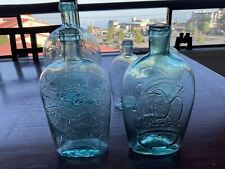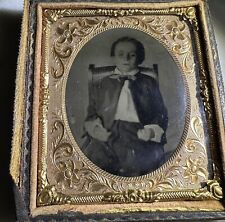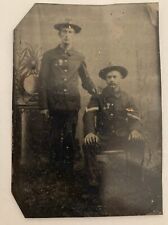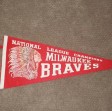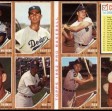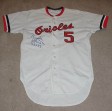When you click on links to various merchants on this site and make a purchase, this can result in this site earning a commission. Affiliate programs and affiliations include, but are not limited to, the eBay Partner Network.
Rare and original, 1860\'s CDV Photograph of Union Civil War Major General Quincy Adams Gillmore - engineer and Commanding Officer of the troops that attacked Fort Wagner including the African-American soldiers of the 54th Massachusetts Regiment the subject of the 1989 Motion picture \"Glory\".
This period, albumen CDV Photo measures approx. 2\" by 3 5/8\" and is mounted on its original, square corner card mount (overall size of mount is 2 3/8\" by 4\"). This is a heavily retouched, vignette bust portrait of General Gillmore that was enhanced with engraved elements. There is printed text on the back of the mount that reads \"Major-General Q. A. Gilmore(sic)\".
This rare and original, CDV Photograph is in excellent condition. The Image exhibits sharp focus, strong contrast and rich tonality. Both the photograph and the mount are crisp and clean and exceptionally well preserved.
A rare and original, 1860\'s CDV Photograph of United States Army General Quincy Adams Gillmore and a fantastic addition to any collection!!
Be sure to check out this sellers other sales for a number of other, fantastic, original Civil War Photographs which are also being offered for sale this week on !!!
Quincy Adams Gillmore (February 25, 1825 – April 11, 1888) was an American civil engineer, author, and a general in the Union Army during the American Civil War. He was noted for his actions in the Union victory at Fort Pulaski, where his modern rifled artillery readily pounded the fort\'s exterior stone walls, an action that essentially rendered stone fortifications obsolete. He earned an international reputation as an organizer of siege operations and helped revolutionize the use of naval gunnery.
Gillmore entered the United States Military Academy at West Point, New York, in 1845. He graduated in 1849, first in a class of 43 members. He was appointed to the engineers and was promoted to first lieutenant in 1856. From 1849 until 1852, he was engaged in constructing the fortifications at Hampton Roads in coastal Virginia. For the next four years, he was instructor of Practical Military Engineering at West Point and designed a new riding school. Beginning in 1856, Gillmore served as a purchasing agent for the Army in New York City. He was promoted to captain in 1861.
With the outbreak of the Civil War in early 1861, Gilmore was assigned to the staff of Brig. Gen.Thomas W. Sherman and accompanied him to Port Royal, Virginia. After being appointed as a brigadier general, Gillmore took charge of the siege operations against Fort Pulaski. A staunch advocate of the relatively new naval rifled guns, he was the first officer to effectively use them to knock out an enemy stone fortification. More than 5,000 artillery shells fell on Pulaski from a range of 1,700 yards during the short siege, which resulted in the fort\'s surrender after its walls were breached. Although he was one of the best artillerists and engineers in the army he was not well-respected by his men.
After an assignment in New York City, Gillmore traveled to Lexington, Kentucky, where he supervised the construction of Fort Clay on a hilltop commanding the city. He was then assigned to replace Maj. Gen. Ormsby M. Mitchel in charge of the X Corps after that officer\'s death from yellow fever. In addition, Gillmore commanded the Department of the South, consisting of North and South Carolina, Georgia and Florida, with headquarters at Hilton Head, from June 12, 1863, to May 1, 1864. Under his direction, the army constructed two earthen forts in coastal South Carolina—Fort Mitchel and Fort Holbrook, located in the Spanish Wells area near Hilton Head Island.
He commanded forces that occupied Morris Island, Fort Wagner, and Fort Gregg, and also participated in the destruction of Fort Sumter. On July 18, 1863, during the siege of Charleston, South Carolina, Gillmore launched a major assault on Fort Wagner. The troops who assaulted Ft. Wagner were comprised primarily of the 54th Massachusetts Regiment, which included only African-Americans in its complement. Gillmore had ordered that his forces be integrated and that African-Americans were not to be assigned menial tasks only, such as KP or latrine duty, but instead they were to carry arms into battle. They and their assault on Ft. Wagner were the subject of the 1989 Civil War movie Glory, which starred Morgan Freeman and Matthew Broderick. \"So shortly after 6:30 p.m., on July 18, 1863, the Union Colonel Robert Gould Shaw (played by Matthew Broderick) readied the 600 men of the 54th Massachusetts regiment for an assault on Ft. Wager. Shaw was the 25 year old son of Boston abolitionists, was white, as were all his officers. Again, all the regiment\'s enlisted complement were black, i.e. African-American.\" [from the History Net, African American History, 54th Massachusetts Regiment].
Although he does not received attribution for his command in the credits, the African American troops in the movie \"Glory\" were in fact under General Gillmore\'s command and were engaged in battle because of his orders ordering that they be allowed to do so. Prior that time, a 1792 law foroffer African Americans from participating in the military, i.e., it foroffer \"persons of color from serving in the militia\". However, his troops were unable to seize Charleston. In February 1864, Gillmore sent troops to Florida under the command of General Truman Seymour. Despite orders from Gillmore not to advance into the interior of the state, General Seymour advanced toward Tallahassee, the capitol, and fought the largest battle in Florida, the Battle of Olustee, which resulted in a Union defeat.
In early May, Gillmore and the X Corps were transferred to the Army of the James and shipped to Virginia. They took part in the Bermuda Hundred operations and played a principal role in the disastrous Drewry\'s Bluff action. Gillmore openly feuded with his superior, Benjamin F. Butler over the blame for the defeat. Gillmore asked for reassignment and left for Washington, D.C., On July 11, 1864, Gillmore organized new recruits and invalids into a 20,000-man force to help protect the city from a threat by 10,000 Confederates under Jubal A. Early, who had reached the outer defenses of the Union capital.
Gillmore was breveted as a major general of volunteers and a lieutenant colonel of engineers in the regular army. In mid-May 1865, Gillmore ordered all remaining slaves in the territory under his command to be freed; later that month he imposed martial law to enforce his orders. With the war over, he resigned from the volunteer army on December 5, 1865.
Gillmore returned to New York City and became a well known civil engineer, authoring several books and articles on structural materials, including cement. He was involved in the reconstruction of fortifications along the Atlantic coast (including, ironically, some that he had destroyed as a Union general). He served on the Rapid Transit Commission that planned the elevated trains and mass public transportation, as well as leading efforts for harbor improvements and coastal defenses. He was a prominent member of the University Club of New York.
After his first wife died, he married the widow of General Braxton Bragg, sometime after Bragg dropped dead in New Orleans in 1876. One of General Gillmore\'s sisters, Sophia, married a Civil War officer named Daniel Seth Leslie; Leslie was from the same area near Lorain, OH, as Gillmore. Three descendants of Daniel Seth Leslie were named in General Gillmore\'s honor, i.e. \"Quincy Gillmore Leslie\", his son \"Quincy Charles Leslie\" and his son, \"Quincy Gilmore Leslie\". In light of General Gillmore\'s association with African American troops under his command, Daniel Leslie was assigned some responsibilities for African American veterans after the Civil War. His name (Daniel Seth Leslie) is reported to appear on a monument to African American troops in the Washington, DC area.
Some African Americans carried the Gillmore and Leslie names forward. The Traveling Secretary for the Negro Leagues Kansas City Monarchs was named Quincy \"J.\" Jordan Gilmore. (note the change from two LL\'s in Gilmore). He was nicknamed \"Sect\" and held that position from 1920 to 1925, with the Monarchs winning the Negro League World Series in 1924. He was born in Gary, IN, on June 29, 1882, died Feb 2, 1952. A baseball card has been published in his honor, by \"Phil Dixon, 1987\". Also, there are at least two contemporary (1990\'s to 2007) African American\'s named Quincy Leslie, one of whom is a Sergeant in the US Air Force.General Gillmore died at Brooklyn, New York, at the age of 63. His son and grandson, both also named Quincy Gillmore, were also generals in the U.S. Army.
Overseasshippping is extra and cost will be quoted at buyers request. Massachusetts residents must add 6.25% sales tax.
Please check out other early and interesting items offered by this seller on . Click Here to See Our Items We Have for Sale in the Gallery and Click Here to Add Us To Your Favorite Sellers List
Here to Discover More About this Item and Many Others on Our New Informational / Non-Commercial / Reference Blog - Walnutts.com.
Important Notes about Shipping Charges:
The amount quoted for Shipping & Handling is calculated by and is equal to the EXACT amount charged by the Post Office plus a $1.00 \"packing fee\" - the $1.00 fee is our only compensation for the virgin packing materials we use on all of our professionally packaged boxes as well as our cost for the salaried help that does most of our packing - as I am sure you can see, we make NO profit on the Shipping charges and, in fact, our costs are usually greater than the $1.00 fee. Please contact us if there are any issues regarding the cost of shipping.
.




